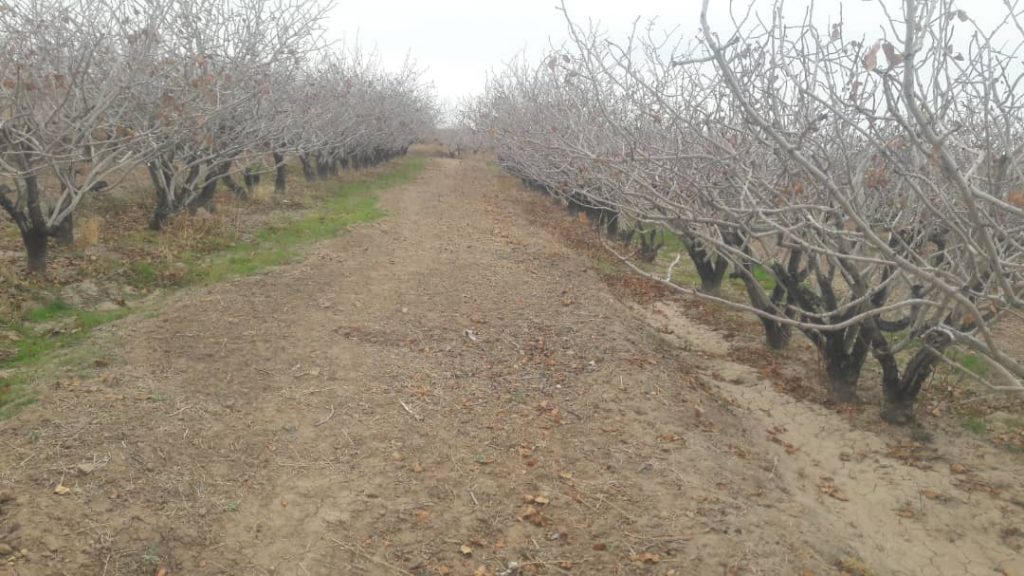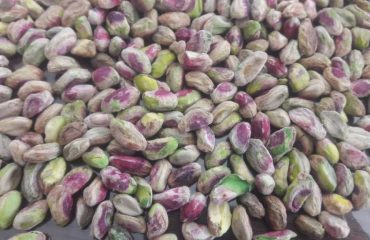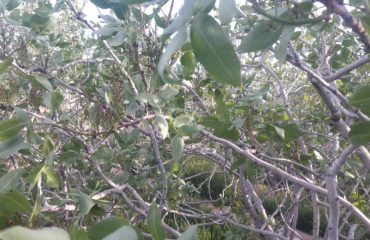1. Winter fertilization operations
Winter, which is the root of the dormant tree, is the best time to nourish and improve the soil. Winter nutrition includes phosphorus and potash fertilizers and micronutrients in the form of sulfate and animal manure. Due to the low mobility of potassium and phosphorus fertilizers as well as sulfates of trace elements, it is recommended to use these elements at a depth where we have maximum root activity.
Pistachio tree absorbs more than 80% of its water and food needs from a depth of 40 to 80 cm. Soil stabilization capacity is high in most pistachio growing areas. Therefore, putting fertilizer on the ground and shoveling seven puts the fertilizer at a maximum depth of 20 cm where there are no active roots.
After digging the canal with a suitable depth, a layer of rotten animal manure with a thickness of approximately 10 cm is poured on the bottom of the canal and then the recommended amounts of chemical fertilizers are poured on it. The dug canal should be filled with soil by the first decade of March at the latest. The more rotten the manure, the better the answer.
In addition to being contaminated with a number of pathogenic bacteria and weeds, fresh animal manures absorb soil nitrogen during decay and act as a competitor to the tree. For information on how to rot animal manure, you can refer to the Bangalore method or the publication How to rot and process animal manure published by the Pistachio Research Institute.
2. Rehabilitation of pistachio orchard soil
Generally, in winter, saline, alkaline and heavy soils are repaired. The best modifier that is cheap and available is calcium sulfate or gypsum. Gypsum should be spread evenly on the soil surface and never put into the fertilizer channel, which is phosphorus fertilizers. In case of contact with superphosphate fertilizer, gypsum turns it into a series of low-soluble to insoluble salts. Therefore, try to spray gypsum on the soil surface and then heavy irrigation.
In late March, which coincides with the swelling stage of the buds, it is necessary to spray the garden with elements that have a direct and decisive effect on pollination and inoculation. Among the nutrients, three elements are zinc, boron and nitrogen. The proposed formula includes zinc chelate (٢ per thousand) + boron (2 per thousand) + urea (3-5 per thousand).
To harvest a good crop, we must act when pollination and flower and cluster formation have not yet taken place. Unfortunately, most gardeners start feeding from the beginning of May, when the cluster is complete. Nutrition and foliar application after opening and cluster formation have a greater impact on next year’s crop than this year’s crop. Of course, these sprays are effective on encephalitis.
At the beginning of the season, the buds are activated earlier than the roots of the tree and begin to grow. If not fed properly, a number of buds will not open or if they open, only a small number of seeds will form on each cluster. In winter, the use of sub-breakers is recommended every three to four years for orchards where agricultural machinery is heavy and hard-layered.




